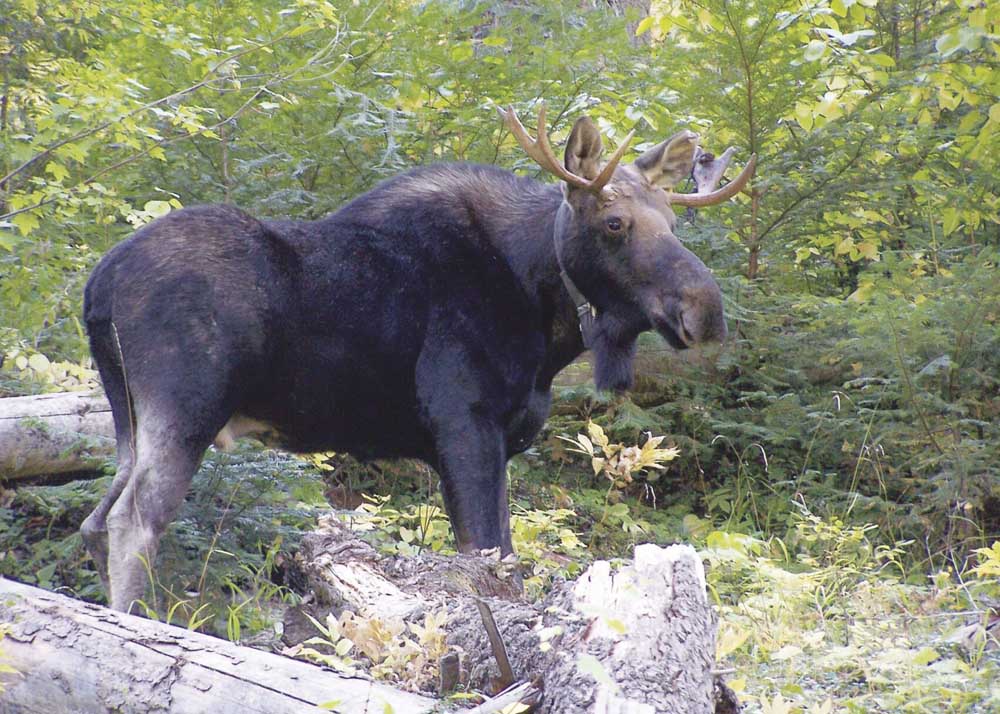Moose on the loose
Published 3:08 pm Saturday, February 24, 2024

- A bull moose photographed in northern Wallowa County in 2004.
ENTERPRISE — Brent Wolf knows a little about Oregon’s moose population.
He’d like to know a lot more.
This largest member of the cervid family, which includes deer and elk, also is the most rare in Oregon.
Just how rare, by numerical measure, is one of the questions Wolf would like to answer.
He’s the district wildlife biologist at the Oregon Department of Fish and Wildlife’s Enterprise office. Wolf started the job about five months ago.
His district includes the area around the Wenaha Wilderness, in northern Wallowa County, where Oregon’s modest population of Shiras moose has roamed for about 25 years.
The ODFW website pegs that population at around 50 animals.
Wolf prefers to cite a range — more than 10 but fewer than 100.
He said ODFW officials plan to undertake a more thorough survey of the moose herd, including a more firm estimate of the total number of animals as well as the distribution by age and sex.
But other tasks, including monitoring much more numerous animals such as mule deer and elk, have kept the moose study relatively low on the priority list, Wolf said.
Until that task moves higher, Wolf said much of what ODFW knows about moose is based largely on anecdotal reports, including from the public.
ODFW biologists confirmed that moose had produced calves in 2006, and in 2008 they fitted tracking collars to a few animals. The batteries in those collars have long since died. Wolf said moose are most often reported in the Wenaha unit, with occasional reports of young bulls in the Sled Springs and Chesnimnus units.
Wolf said he took a helicopter flight over the Wenaha country in January and although he saw no moose, he did see several sets of tracks that, based on their size, he is pretty sure were made by moose.
Wolf said he wasn’t surprised he didn’t see one of the hulking animals, since the forest in that region is more dense than in most of the Blue Mountains.
Indeed, that’s likely one reason the moose migrated to the area, coming from Washington or Idaho or, possibly, from both states.
The real attraction, Wolf said, is willow trees, the species’ favorite food.
Although that lack of detailed surveys means biologists can only speculate about Oregon’s moose population, Wolf said it’s reasonable to believe that the animals live year-round in the Wenaha country. The winters can be frigid and the snow deep there, but for a species that frequents the Arctic, the conditions pose little threat, Wolf said.
“They have such long legs they can handle deeper snow,” he said.
As with most mammals, young male moose are prone to “dispersing” — striking off alone. And moose can cover quite a lot of miles.
Individual moose, most of them young bulls, have been seen over the past decade and a half in, among other places, the Wallowa Valley, Hurricane Creek Canyon southwest of Joseph, the Eagle Cap Wilderness near Burger Meadows, and in Baker Valley.
A young bull moose spent several days near quarry ponds just east of Interstate 84 near Baker City in July 2019.
On Jan. 16 of this year, someone illegally shot and killed a cow moose near Ontario. An ODFW biologist said moose are occasionally seen in that area. Wolf said those moose likely came to Oregon from Idaho rather than from the Wallowa County population.





